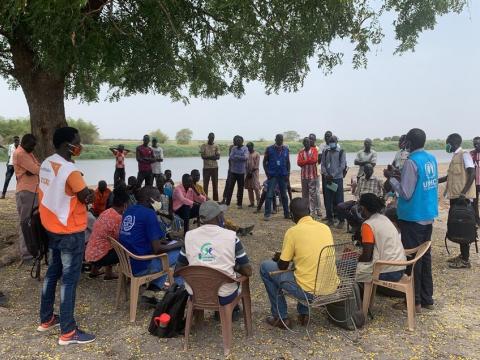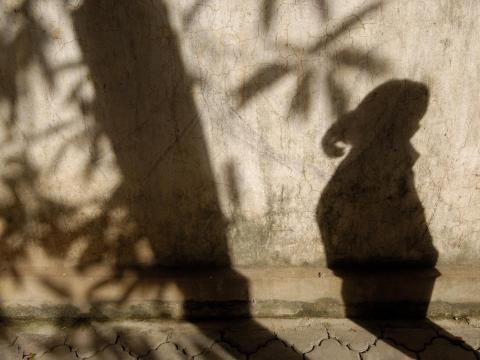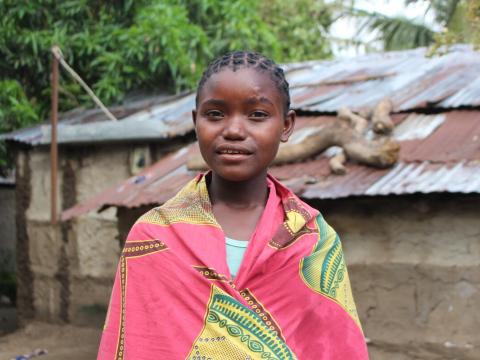
Why we should stop, look and listen - everywhere
By Sarah Pickwick, in conversation with Martin Omoro and Christian Kasereka
Ongoing change is what you expect to see, hear about and have to adapt to if your organisation works in multiple places around the world, especially those which are turbulent as well as fragile. Whether it’s a drought, an outbreak of violence, deadly disease or a natural disaster, as a security analyst I expect to look at these sorts of things and their implications for our work in my day-to-day job.
Still, the sheer volume of change with COVID-19 plus so much else happening over the last year feels unprecedented. So how do we best make sense of it when there’s so much rapidly evolving and revolving? And it’s not just past and current change, but what else might happen in the future.
For me it's definitely uncertain and at times daunting. This is especially when you see the cumulative impact of all the changes in fragile contexts where some of the most vulnerable children live, which are now much more insecure. Over the last year I’ve watched many in our field offices try to make sense of their changed and changing surroundings, or contexts as we might say. This has been so they can swiftly adapt programming in a safe and secure way, in order to ensure vulnerable children are cared for and protected quickly. Many were doing this even before COVID-19.
I reached out to two colleagues recently who have worked on this, Martin Omoro, World Vision’s Program Quality and Strategy Manager in South Sudan, and Christian Kasereka, Project Manager in East Democratic Republic of Congo. Together we reflected on how agencies like World Vision can continue to achieve impact for vulnerable children by making the right decisions to adapt (or not) and remain relevant and safe while, when confronted with new circumstances.
The ‘how’ from them is quite simple: we start by continually monitoring our context, current, past and anticipating future trends. By listening.
When we monitor – which means to go out and listen to people and understand our surroundings – we can actively and flexibly make good and timely decisions on how to act. Putting in place and implementing a plan for doing this leads to an expansion and deepening of impact for the most vulnerable children and their families.
Here are three ways we do this:
- Basing context monitoring on listening to front-line staff, partners and the community, to deepen impact
“By involving and listening to community leaders such as local authorities, influential faith leaders, civil society actors, youth leaders, this creates community ownership in terms of assessing the context. In security situations it can, at times, give humanitarian actors better access to difficult-to-reach areas. We have had to take time to build relationships and trust through formal and informal meetings, talking with them about things that concern and affect them, including discussions on way forward. The involvement of the community in assessing the context is essential to keep our projects working in very difficult times,” said Christian.
Martin agrees: “Involving the community is critical. They understand their context and can challenge our perceptions. It’s the only way to ensure we track the right issues, in order to inform any programme adaptations so we remain relevant. It is also important to listen to our front-line staff. There are many different sources of information we can draw on, formally and informally.” - Creating a culture of flexibility for context monitoring
Christian reflects: “In the area where I work, we have a plan for doing context monitoring. This means project staff, who can be from several departments, go out and collect a range of information from different people about what is currently happening and what might happen and how it affects them as well as children in need. They talk to women, men, faith leaders, children, youth, the elderly, and decision-makers at different levels, and together reflect on trends they might see, which we feed into our weekly project meetings for discussion.
“This has informed decisions such as which areas we work in and it has prompted us on several occasions to change our activities. As the context changes we also need to be flexible with what we look out for, and update our action plan with communities as needed.”
Martin adds: “Having a flexible and practical context monitoring system is key. It includes having a mix of things we track, at different levels (national, subnational and community) and from different sources of information.” - Looking at all aspects of the context, past, current and future, and monitoring uncertainty
Martin reflects that: “When we monitor the context, as well as looking at the past and current, it is useful to try to anticipate what may happen in the future. This can inform our planning and preparedness, so if events do occur we can respond more effectively and efficiently.
“Of course this is challenging, given things can be so uncertain but we still need to monitor. Also at times a context changes too fast that monitoring systems may not even predict. This is where we need to have the margins or space built into our work to be open to and able to change."
Christian adds: “We sometimes have to follow up on context monitoring daily, as contexts change and to avoid surprises we rapidly put in place a mitigation plan. This is why it is important that we also anticipate what can happen in the upcoming period.”
For me, having worked in a number of the contexts Christian and Martin talk about, what seems to be primary in all of this is the flexibility and support we need to have for local decision-makers. They should be able to design, collect and present context monitoring information in a way that is practical and works for them.
Many of the fragile contexts we work in are likely to become more turbulent and unpredictable in the coming years. This is linked to a combination of factors such as conflict, poverty and the impact of COVID-19, just to name a few. It is essential that when things change, we are as ready and as flexible as we can be to change with it. We can’t underestimate the importance of listening as one step to achieving this. We listen, through strong context monitoring, in order to make sense of our world.
To read more about how context monitoring helped our work in DRC, see our case study here. Sarah Pickwick is a Senior Security Analyst in World Vision's global team. Follow Sarah on Twitter @sarahpickwick

